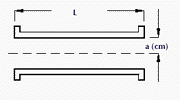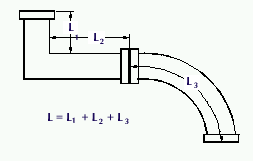| Re: 30 dollar 12HP+ air foil? |
Subject: Re: 30 dollar 12HP+ air foil? by jhammons01 on 2009/12/15 16:28:26  Conductance Calculations Please see the information on VacTran, the computer modeling program that calculates conductances and creates virtual vacuum systems. Using a formula he derived, Dushman calculated the conductances for cylindrical tubes based on their measured dimensions, producing the table below. The equation may err by as much as 12% for systems in free molecular flow (see J. Vac. Sci. Tech., Vol. 4, No.3, page 338). However, given the uncertainties and errors in measuring effective pumping speeds, base pressure, gas load, etc., this level of error is mostly insignificant. Using Dushman's Table * Measure the overall length of the tube in any convenient units. * Measure the tube ID in the same units. * Divide the ID by 2 to give the radius. * Divide the length by the radius. This gives the 'L/a' ratio used in Dushman's table. * Convert the radius to centimeters. This gives the 'a(cm)' used in Dushman's table. * Enter the numeral at the appropriate 'a' row. * Go right until under the value of the calculated 'L/a' ratio. If the exact number is not available, use the next larger 'L/a' or interpolate. This gives the conductance value of a straight cylindrical tube in liters/second. Go here for the chart http://www.lesker.com/newweb/technical_info/conductance_calc.cfm  Adopting some general rules, Dushman's results can be applied to tubes of other cross-sections. The results will not be totally accurate, but, since the calculated conductances are likely underestimated, it is often worthwhile to use them. * For tubes with right-angle bends, measure 'L' as the shortest distance shown (see drawing on the right). Calculate the conductance from the table as if the tube were straight, then divide the conductance by 2 for every right-angle bend. * For tubes with rectangular or square cross-section (or even the annulus between two tubes), calculate the open area and find the radius of a cylindrical tube with an equal open area. Calculate the conductance of this 'equivalent tube' using Dushman's table. * If the diameter changes along the length of the tube, use the smallest diameter to calculate 'a'. (Doh!) Conductance Conclusions When designing a vacuum system or changing components in an existing one, always attempt to maximize conductance. In any high-vacuum situation, keep these points in mind: * It is all too easy to lower conductance accidentally. * Make all tubes and components as short as possible and as open (with large diameters) as possible. * The part with the smallest conductance determines the maximum conductance. * In high-vacuum or UHV applications, the concept of the conductance being too high has no meaning. The converse, however -- a conductance 'too low' -- happens all too frequently. |








